Maths
1/78
Earn XP
Name | Mastery | Learn | Test | Matching | Spaced |
|---|
No study sessions yet.
79 Terms
The Trapezium rule
Area = 0.5 h (y0 + y3 + 2 (y1 + y2)
First + last + (2 x rest)
Variable acceleration
Integrate Integrate
S V A
Differentiate Differentiate
Simple random sampling
Takes a random selection from the population to use as a sample. The entire population must be known and identifiable. Each random sample will be different and some will contain bias. The probability of a strongly biased sample is reduced as sample size increases.
Stratified sampling
If the parent population has clear subgroups, it is possible to take a sample. The quick calculation to determine the number for each subgroup to be randomly selected as part of the sample is: (number in subgroup/ number in population) x sample size. This technique requires a lot of information to begin about the population.
Quota sampling
Similar to stratified, though the ‘quota’ of items to be included from different subgroups isn’t necessarily proportional. It also doesn’t require a random sample from within the subgroup, so bias is extremely likely.
A method where a sample is selected from a population at regular intervals; for example, every 10th individual in a list. This method is straightforward but can introduce bias if there's a hidden pattern in the population.
Midpoints
((X1+X2)/2), ((Y1+Y2)/2)
Distance between two points
√((x_2-x_1)²+(y_2-y_1)²)
Gradient of a chord
Y2-Y1/X2-X1
Parallel lines
The same gradient
Perpendicular lines
Negative reciprocal gradient
Y intercept
When X=0
X intercept
When Y=0
Perpendicular bisector
1) midpoint
2) neg recip gradient
3) Y-Y1= M(X-X1)
4) rearrange into Y=MX+C
Quadratic formula
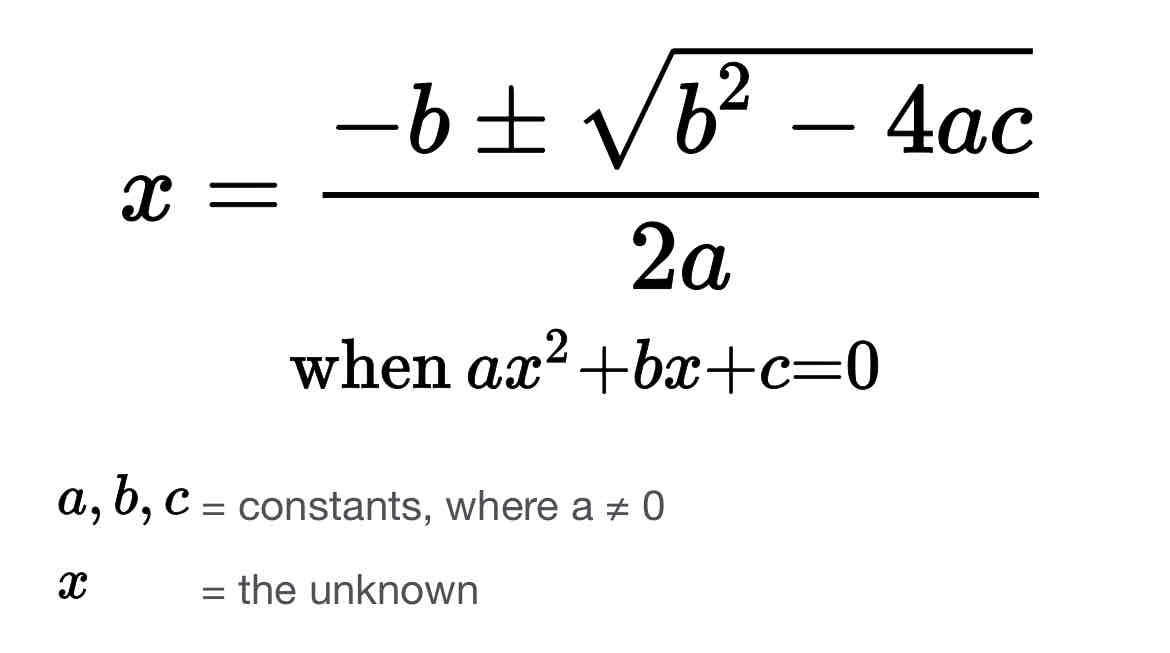
Discriminant
B²-4ac
One real root
When the discriminant = 0
Two distinct roots
When the discriminant > 0
No real roots
When the discriminant <0
Two rational roots
Perfect square
(X+ 1/2b)² +0
1000= 10³
Log10(1000)=3
LogbB
1
Logb1
0
LogcA+logcB
LogcAB
LogcA-logcB
LogcA/B
Logc(A^B)
BlogcA
Logc√A
1/2logcA
LogeX
lnX
If f(a/b) = 0
Then (bx-a) is a factor
If it isn’t a factor
It is a remainder
The Remainder Theorem states that if a polynomial f(x) is divided by (x-a), the remainder is equal to f(a). This can be used to quickly find remainders without completing the full division.
Y=X
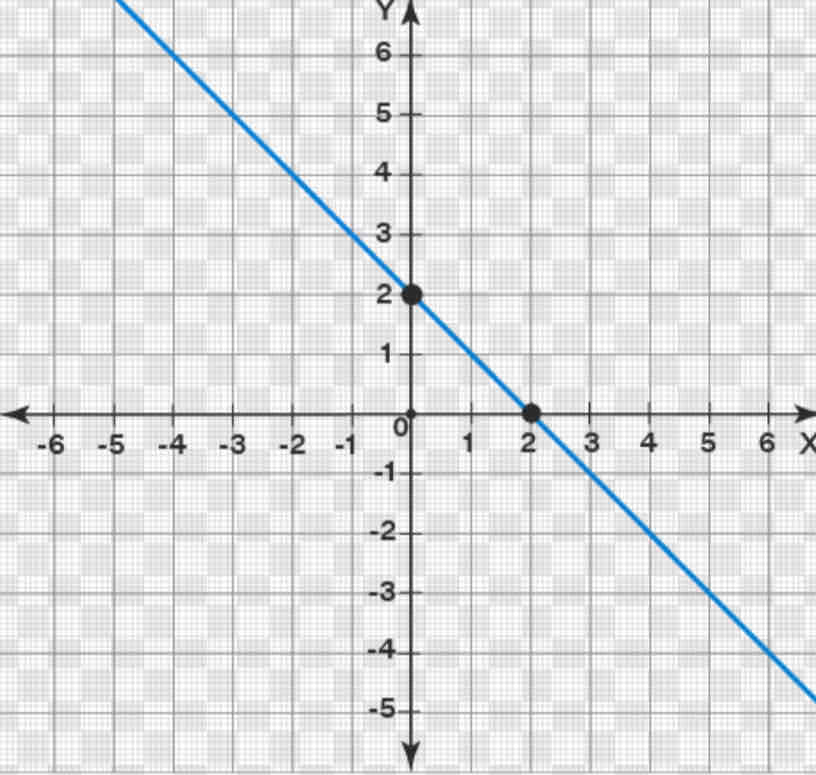
Y=X²
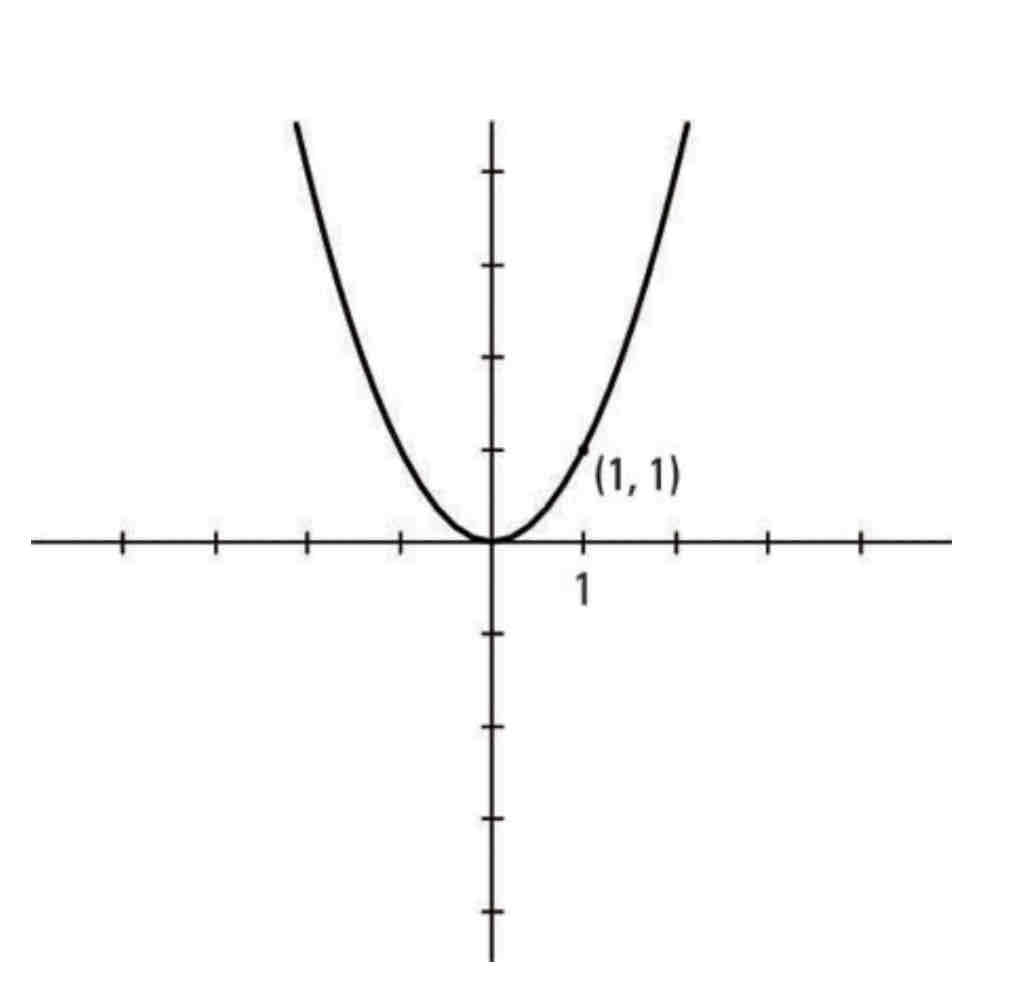
Y=X³
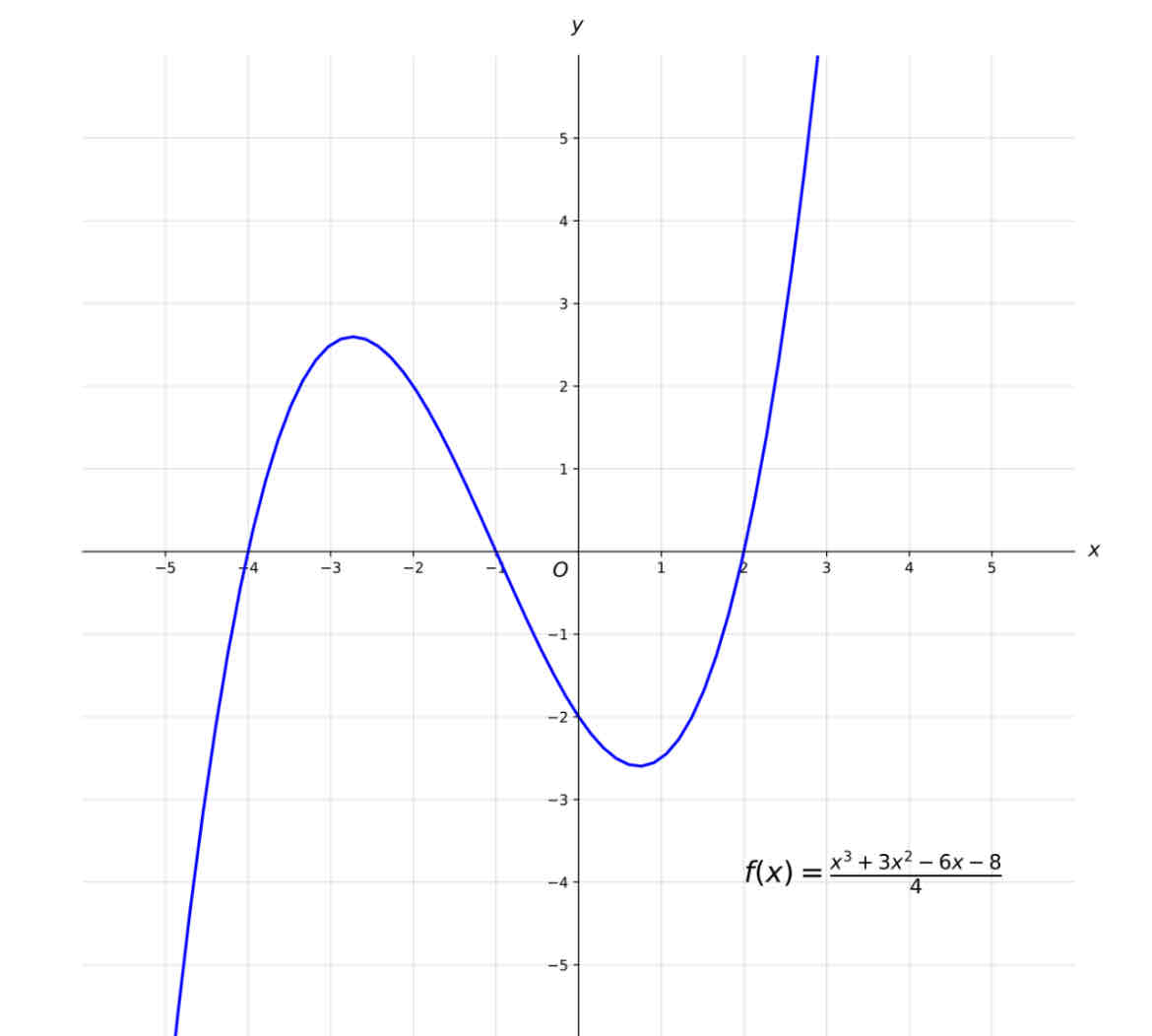
Y= 1/X
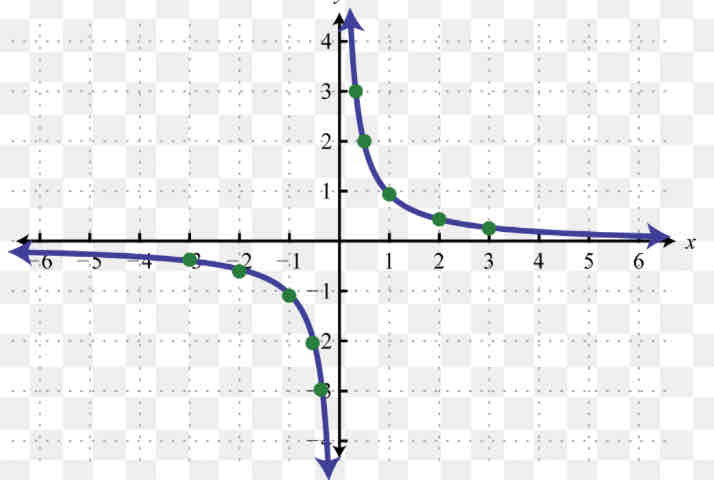
Y²+X²=r²
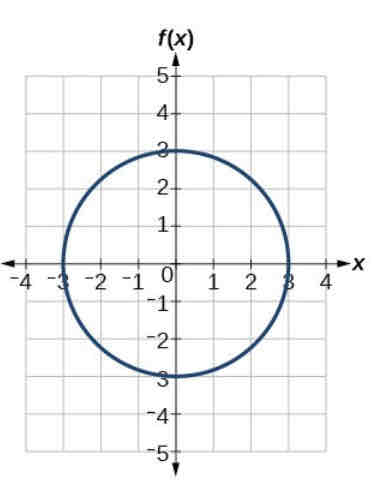
Translation of Y=f(x) by the vector [ab]
Y=f(X-a)+b
Stretch on the x axis by the factor k
Y=f(1/k X)
Stretch on the Y axis by the factor K
Y=KF(X)
Reflection on the x axis
Y= -f(x)
Reflection on the y axis
Y=f(-X)
Reflection on y=x
Swap the x and y
Eg. Y=f(x) ↦ X=f(y)
Finding the centre and radius of a circle
Complete the square
Circle theorem
If <ABC = 90°, then AC is a diameter of the circle with A,B,C on the circumference
Tangent
Line touching a circle at a distinct point
Normal
Line perpendicular to tangent
Given Y= ab^x
Log10Y= log10A+ log10B
Exponential curve
Log10Y and X
1) take logs of both sides
2) simplify
Gradient= log10b
Y intercept = log10a
Y=aX^b
Log10Y= log10A+Blog10X
Polynomial line
Log10Y and log10X
1) take logs of both sides
2) simplify
Gradient= b
Y intercept = log10a
Natural numbers
Positive integers
Integers
All numbers on the numberline
Rational numbers
Fractions
Reals
All numbers you can think of (π, e, 1/3, √2, 500, -2)
Set notation
{x:x ∈ R, a<x<b}
Interval notation
x ∈ (a,b)
( is not including
[ is including
Differentiation in first prinicples

Average speed
Total distance
———————
Time
Average velocity
Total displacement
—-————————
Time
Velocity- time graph into acceleration-time
Acceleration= gradient of velocity
Circle property diameter
The triangle formed from the ends of a diameter has a right angle
Circle property chord
The perpendicular from the centre to a chord bisects the chord
Circle property tangent
A tangent to the circle meets a radius at a right angle
Sin2x
2sinxcosx
Cos2x
Sin²x-cos²x
1-2sin²x
2cos²x-1
Tan2x
2tanx
1-tan²x
Cosec²x
1+cot²x
Sec²x
1+tan²x
Cosecx
1
Sinx
Secx
1
cosx
Cotx
1
tanx
Tanx
Sinx
cosx
Cotx
Cosx
sinx
Moment- clockwise
Negative NM
Moment- anticlockwise
Positive NM
What is a resultant moment
The sum of all moments acting on a particle (negative and positive)
Finding resultant moment
Decide which force direction is clockwise and anticlockwise.
Work out each moment.
Sum all together and subtract clockwise moments.
The overall value is the resultant moment.
When a moment is in equilibrium
The resultant force is 0N and the resultant force about any point is 0NM
Solving problems with moments in equilibrium
Identify ALL perpendicular distances and ALL forces from the pivot
Use the fact that resultant force is 0 in the equation and the fact that the resultant moment is 0 in the other equation
If you have an unknown force you can pick a pivot point that is on the same “line of action” so that unknown force is 0NM
Solve equations
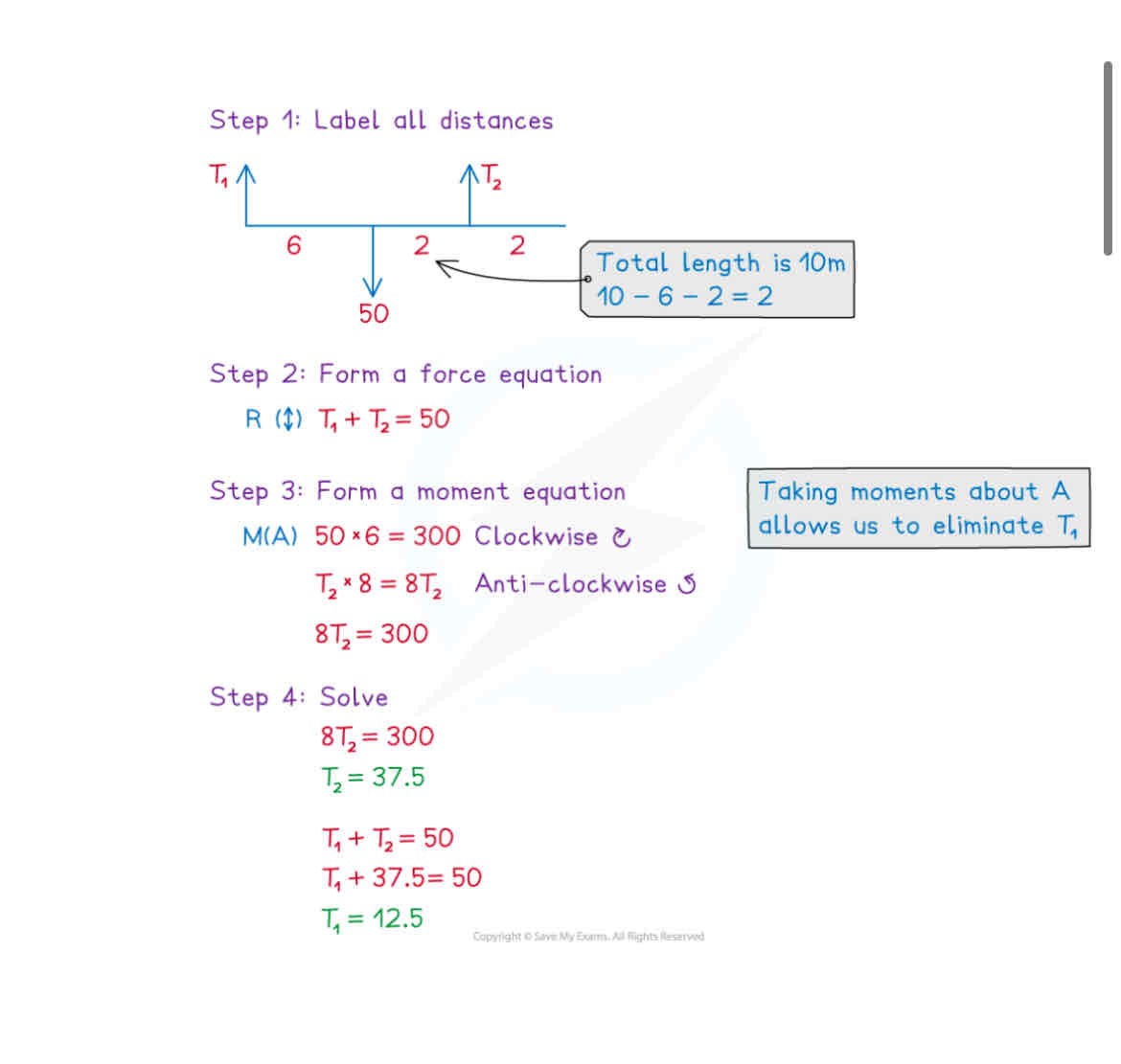
Method for Solving A Level Maths Question on Tilting Rods using Moments
1. Identify all forces acting on the rod. 2. Calculate the moment for each force (Moment = Force x perpendicular distance). 3. Determine the pivot point. 4. Sum the clockwise moments and anticlockwise moments. 5. Set the total moments equal to zero for equilibrium. 6. Solve the resulting equation for unknown forces.
A³ x A²
3+2=5 so A^5